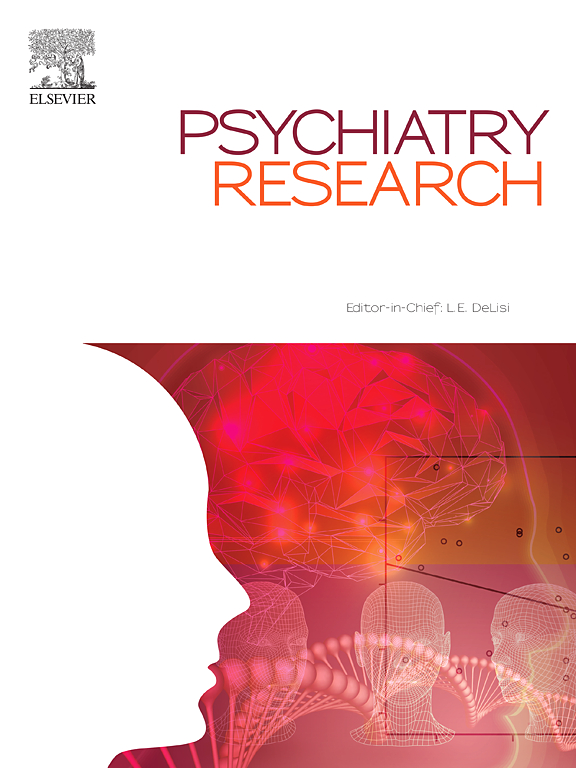Dysfunctional striatal-temporal connectivity is associated with a higher risk for violence in patients with schizophrenia
IF 4.2
2区 医学
Q1 PSYCHIATRY
引用次数: 0
Abstract
Patients with schizophrenia (SZ) exhibit an elevated risk of violence compared to the general population. However, the neural mechanisms of violence in SZ are still unclear. This study examined the neural correlates linked to violence in SZ and determine whether the brain abnormalities were associated with psychotic symptoms of severe delusions. We performed resting-state functional magnetic resonance imaging and assessed the severity of clinical symptoms and personality traits in 140 male participants, aged 18 to 50 years, comprising 39 violent patients with schizophrenia (VSZ), 45 non-violent patients with schizophrenia (NVSZ), and 56 healthy controls (HC). The results showed increased functional connectivity (FC) in the VSZ group in the right insula - middle frontal gyrus coupling(p < 0.001) and right fusiform gyrus (FFG) - left caudate (CAU) coupling (p < 0.001) as well as decreased FC in the right nucleus accumbens (NAcc) – FFG coupling (p = 0.002), compared to the NVSZ and HC groups. Correlation analysis revealed a negative association between affective deficit and FC of the right NAcc - FFG coupling in the VSZ group only (r = -0.350, p = 0.029). Additionally, suspiciousness correlated negatively with the FC value of the right CAU - left middle temporal gyrus coupling in the VSZ (r = -0.387, p = 0.029) and all-patient groups (r = -0.304, p = 0.023). Our findings suggested that aberrant connections between the cortex and subcortical nuclei, especially the striatal-temporal circuit, might be involved in the neurobiological mechanisms of violence in SZ; at the same time, dysfunction of the CAU might be linked to the disease per se. This study highlighting a specific association between violence and psychopathy rather than symptoms of SZ.
求助全文
约1分钟内获得全文
求助全文
来源期刊

Psychiatry Research
医学-精神病学
CiteScore
17.40
自引率
1.80%
发文量
527
审稿时长
57 days
期刊介绍:
Psychiatry Research offers swift publication of comprehensive research reports and reviews within the field of psychiatry.
The scope of the journal encompasses:
Biochemical, physiological, neuroanatomic, genetic, neurocognitive, and psychosocial determinants of psychiatric disorders.
Diagnostic assessments of psychiatric disorders.
Evaluations that pursue hypotheses about the cause or causes of psychiatric diseases.
Evaluations of pharmacologic and non-pharmacologic psychiatric treatments.
Basic neuroscience studies related to animal or neurochemical models for psychiatric disorders.
Methodological advances, such as instrumentation, clinical scales, and assays directly applicable to psychiatric research.
 求助内容:
求助内容: 应助结果提醒方式:
应助结果提醒方式:


